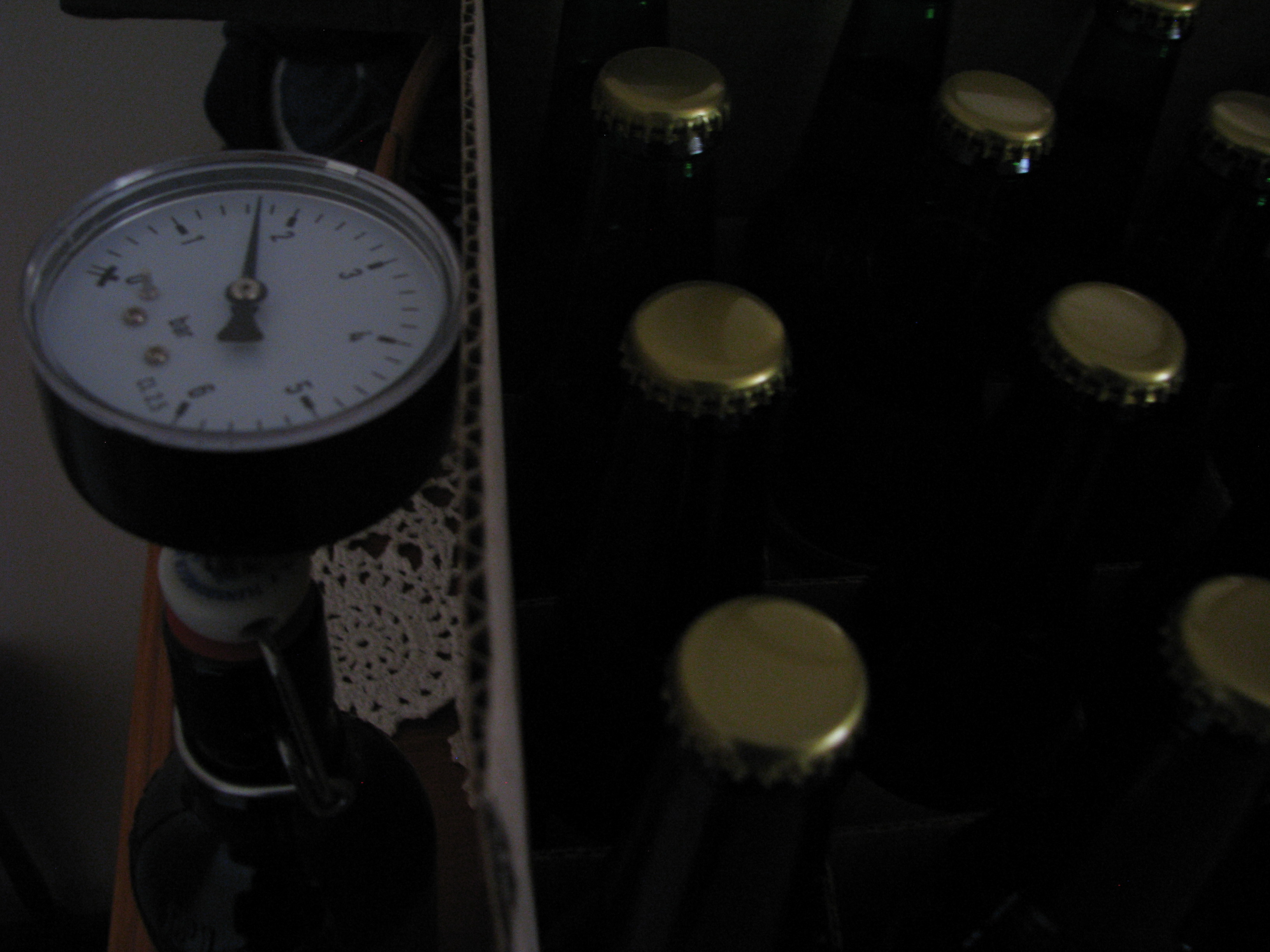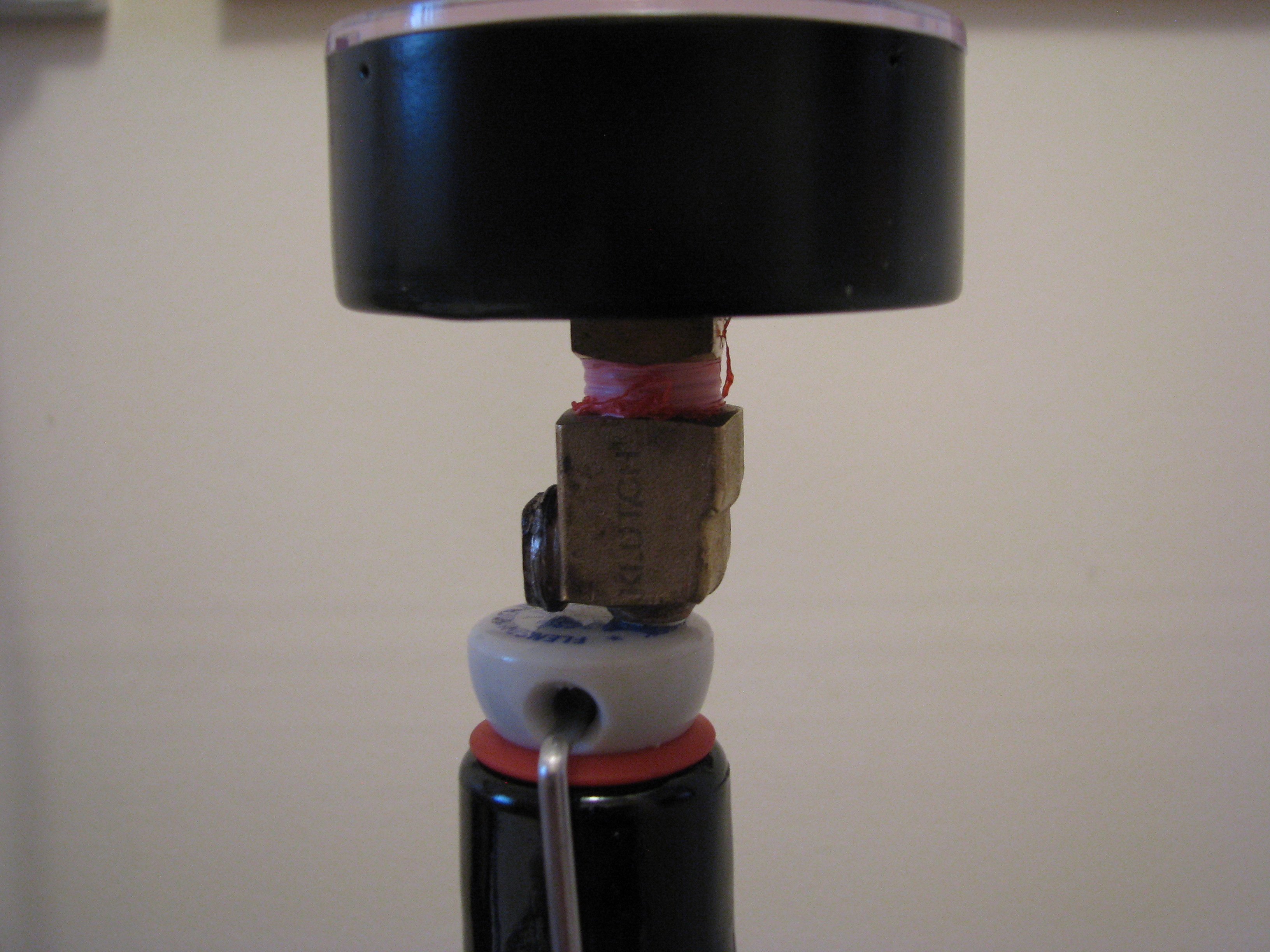I have attached a photo as requested, but there is a bit more to the story. A simple plastic soda bottle with a screw on cap with some of your cider would let you know if the pressure reached something like 2 atm (30psi) which is around the level that most soda is carbonated to. At this level of carbonation, the bottle is quite hard, however at twice this level it is also quite hard so it is difficult to assess the pressure by squeezing once it is over 2 atm.
Using Jolicoeur's Table 15.3 as a guide, Perlant carbonation (a bit spritzig) is about 1 atm (15psi) so the baloon could probably burst around this point if indeed enough CO2 was generated to fill it. The most common carbonation is Petillant (typical of beer) at 1.5-2.8 atm or up to about 40psi (a bit scary since most vehicle tyres are inflated to 25psi or above!). The point of this is that a balloon might not be a reliable indicator of what is happening.
Hence, the idea of a pressure gauge to tell you exactly what is happening so that you can release the pressure if it gets too high. I am assuming that when you referred to a semi-dry cider you will be looking at stopping fermentation before "completely dry" which is 1.000 or below. The issue with stopping fermentation (heat pasteurising, cold crashing, chemical, or whatever) is knowing that fermentation has indeed been stopped rather than just trickling along into bottle bomb territory.
Anyhow... back to the gauge. In my first version I had just put the gauge stem through the screw cap of a soda bottle and held in place with a nut. This worked O.K. but did leak a bit through the soft rubber washers that I used, so the indicated pressure never went above 4 atm and at this pressure, the bottom of the bottle bulged out so it wouldn't stand up. This was all happening in my first heat pasteurisation attempt, so as we say here in Oz, "I was busier than a one armed paper hanger" trying to retrieve the capsized bottle from the hot water while the temperature and pressure continued to go up, until BOOM!
If you do decide to use the gauge in one of your jug caps, firm (fibre or metal) washers with something like epoxy, silicon or food grade thread sealant under them and on the thread, should avoid the type of leakage issues that I had with soft rubber washers.
Most gauges come with a National Pipe Thread (NPT) so fittings should be easy to get. Some gauges can come with British Standard Pipe (BSP) thread so you need to make sure that you get the appropriate fittings.
The Grolsch version in the picture is a bit more complicated, using a fitting screwed into the hard plastic cap and the gauge screwed into this. (I used a Grolsch bottle because they are quite strong so there is a good margin of safety). This approach is a bit more fiddly to make than the simple screw on cap version but it isn't all that hard to do. There is a bit over 1/4" of "meat" between the side of the Grolsch cap and the hole that takes the bail wire, so the gauge stem (or an adaptor if the stem is larger than 1/4" dia) needs to fit into this space. I made an adaptor from a 1/4" screw that was soldered (you could use epoxy) into a NPT female fitting that the gauge screwed into. The screw is brass (easier to drill than steel and it doesn't rust or contaminate the cider).
The screw had a 1/16" hole drilled down the middle. A 3/16"" hole was drilled part way into the Grolsch cap and tapped to suit the thread size. Another 1/16" hole was drilled from the bottom of the tapped hole through to the bottom of the cap in order to make a gas path from the inside of the bottle to the gauge. As above, seal all the threaded parts with teflon gas pipe sealing tape or thread sealant.
.




